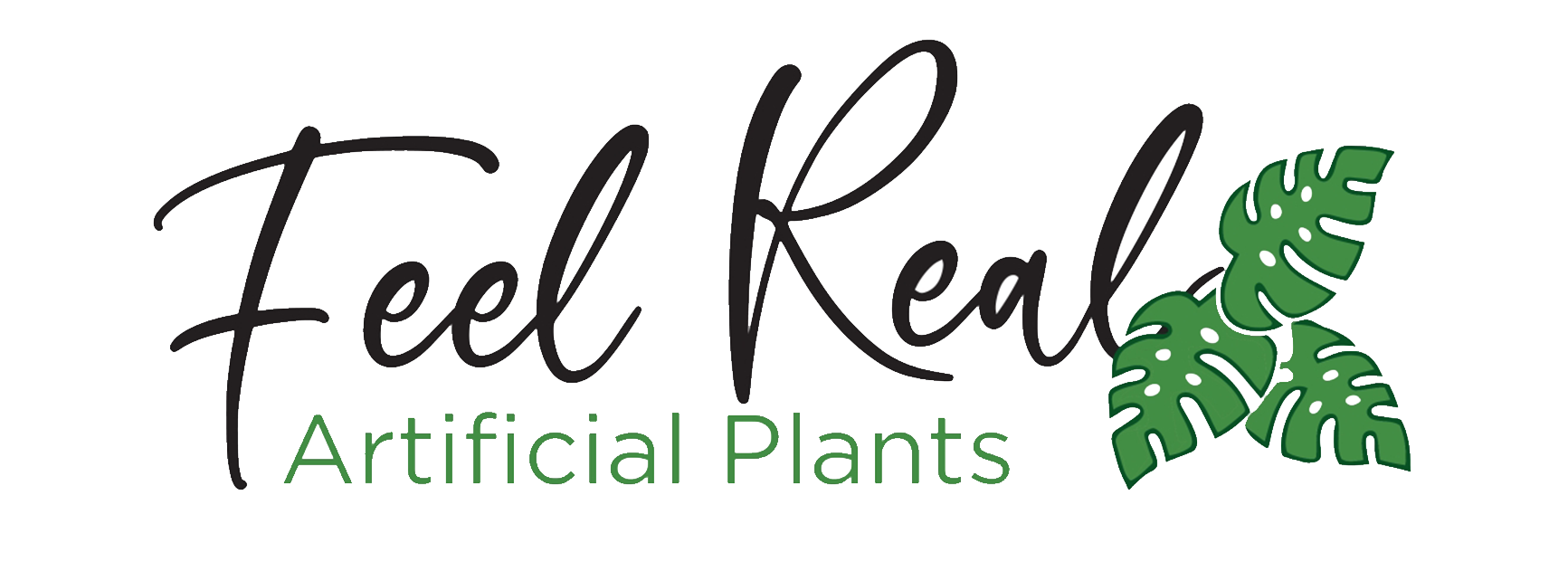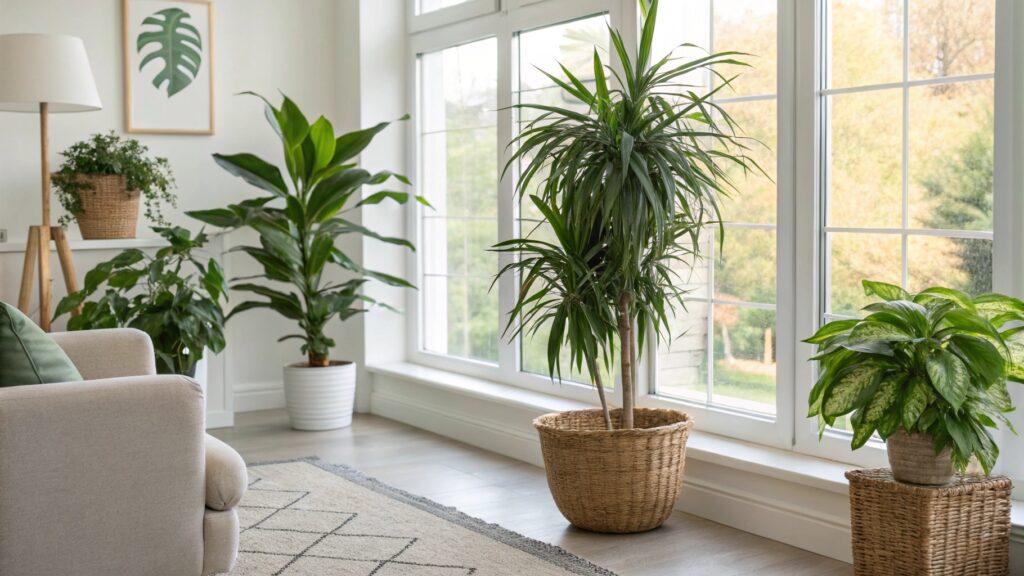In the world of Feng Shui, the energy of a space, known as chi, is of paramount importance. This ancient Chinese practice involves arranging your living or working environment to achieve harmony and balance. While live plants are often recommended to enhance chi, not everyone has the time, space, or green thumb to maintain them. Enter artificial plants – a convenient and effective alternative for improving Feng Shui. This guide offers practical tips on how to incorporate artificial plants into your space to positively influence the energy flow.
Last updated on July 17, 2025, Estimated reading time: 7 minutes
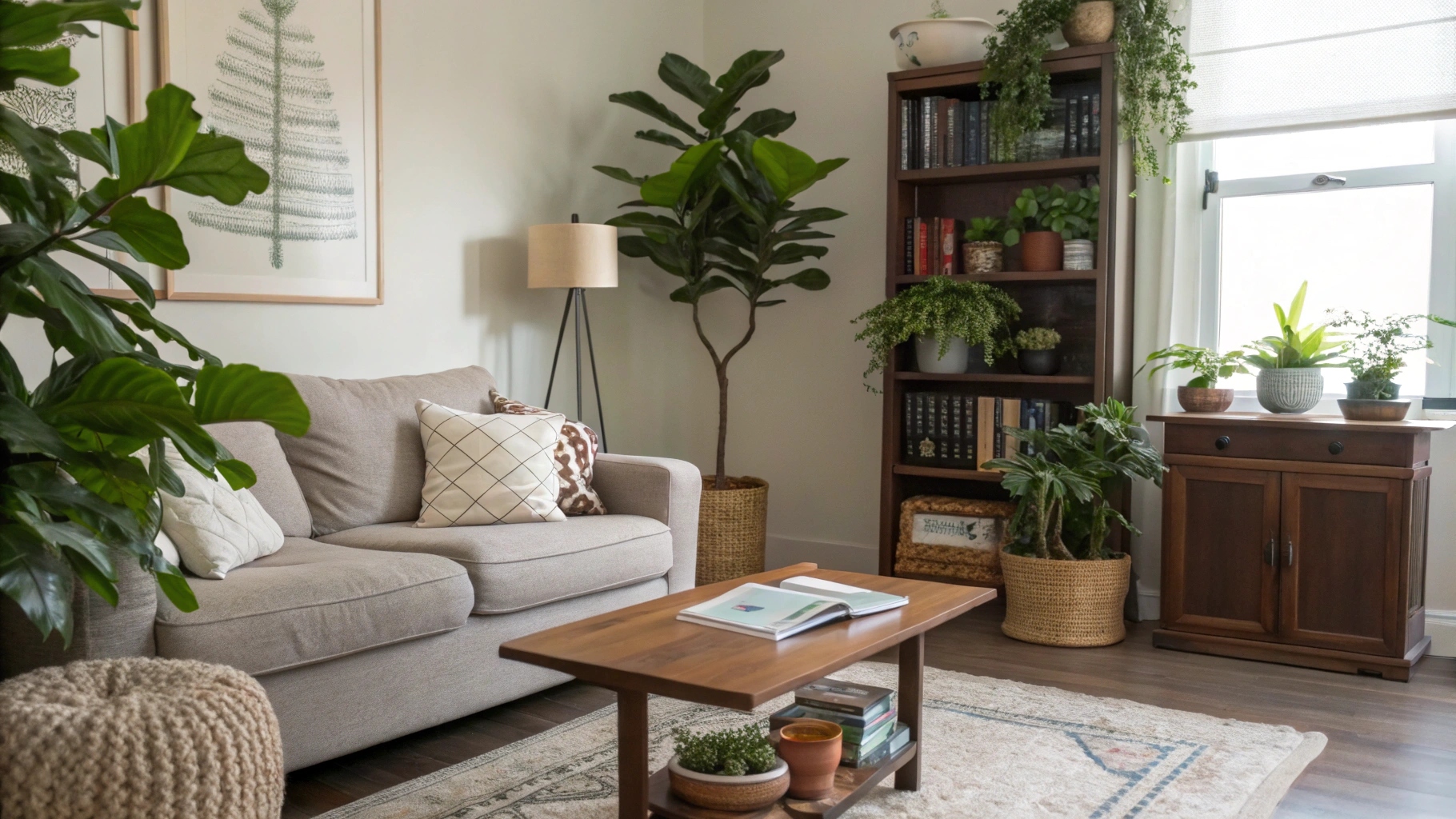
– What is Feng Shui?
1. Explanation of Feng Shui
Feng Shui, an ancient Chinese art, is grounded in the principle of harmonizing individuals with their surrounding environment. It’s a system that involves the arrangement and orientation of various elements within a space to balance the natural world’s energies.
In interior design, Feng Shui is applied to create environments that positively influence the inhabitants’ well-being, health, and fortune. This is achieved by managing the flow of Chi, or life energy, and balancing the five elements (Wood, Fire, Earth, Metal, and Water). Feng Shui in interior design doesn’t just focus on physical placement but also considers the energy, colors, shapes, and materials used, aiming to create a harmonious, balanced, and inviting space.
2. Role of Plants in Feng Shui
In Feng Shui, plants play a significant role in influencing the flow of Chi. They are seen as powerful tools to correct Feng Shui imbalances and enhance positive energy in a space. Plants represent the Wood element, one of the five essential elements in Feng Shui, symbolizing growth, health, and vitality. Their placement can help soften the sharp corners which are believed to create ‘Sha Chi’ or attacking energy, promoting a smoother flow of Chi.
Plants are also used to enhance specific sectors of a space, according to the Bagua map, a Feng Shui tool that divides a space into areas that correspond to different aspects of life, like wealth, health, or career growth. By strategically placing plants, one can nurture and enhance positive energies associated with these life aspects.

– Basic Principles of Feng Shui in Relation to Plant Placement
Feng Shui, the ancient Chinese art of harmonizing individuals with their surrounding environment, is grounded in Taoist principles and the interplay of the natural world. When it comes to plant placement, whether real or artificial, understanding the basic principles of Feng Shui can transform a space, influencing the energy flow, balance, and overall wellbeing.
1. The Five Elements and Plant Placement
In Feng Shui, the Five Elements — Wood, Fire, Earth, Metal, and Water — are essential in creating a balanced, harmonious environment. Each element interacts with the others, either creating a productive or a destructive cycle. Here’s how they relate to plant placement:
Wood: Plants inherently represent the wood element. They symbolize growth, vitality, and upward movement. Placing plants in areas where you want to encourage growth (like a home office) can be beneficial.
Fire: To balance wood, you might add elements that represent fire, such as red or purple accessories, or actual lighting. Plants with red flowers or pots can also subtly introduce the fire element.
Earth: This element promotes stability and nourishment. Earthenware pots or placing plants in earth-related areas of the Bagua map can enhance this energy.
Metal: To control the wood element (as wood breaks earth but is cut by metal), incorporating metal accents near plants, like metal stands or white elements, can create balance.
Water: Although water nourishes wood, too much can lead to imbalance. In Feng Shui, mirrors or blue decorations near plants can symbolize water, promoting a flow of energy without overwhelming the wood element.

2. Yin and Yang Balance with Artificial Plants
Yin and Yang, representing opposing yet complementary forces, are central in Feng Shui. The goal is to balance these energies in your space. Plants, especially lush, green ones, are considered more Yang, bringing active, vibrant energy. To balance this, especially when using artificial plants, consider the following:
Yin Spaces: In areas meant for relaxation, like bedrooms, use smaller, softer artificial plants to keep the Yang energy in check.
Yang Spaces: In livelier areas like the living room, larger, more vibrant artificial plants can enhance the Yang energy.
Textures and Colors: Soft, rounded leaves can introduce Yin energy, while spiky, bright-colored plants introduce more Yang.
3. Using the Bagua Map for Plant Placement
The Bagua map is a grid that divides any space into nine areas, each corresponding to different aspects of life. Here’s a basic guide to using it for plant placement:
Locate the Bagua Areas: Place the map over your home’s floor plan with the bottom aligning with the front door. Each section of your home corresponds to different life aspects like wealth, family, or knowledge.
Wealth and Prosperity: This area is often associated with the color purple and the wood element. A healthy plant here can symbolize growing wealth.
Family and Health: Green is the key color, and wood is the element. Tall, wooden plants can enhance energy in this zone.
Knowledge and Self-Cultivation: Earth elements dominate here. Small, round-leafed plants in earthy pots can stimulate this energy.

– Are fake plants bad luck?
High-Quality Artificial Plants Create Good Feng Shui
Most feng shui concerns arise from poor-quality faux plants that appear artificial, but luxury artificial decoration using big trees, bonsai arrangements, ficus, fig trees, and topiary can enhance your garden, patio, and indoors spaces. From privacy screening with synthetic shrubs to landscaping with artificial vines in planters and pots, quality artificial greenery brings positive energy to exterior and interior environments. The materials matter most – choose realistic artificial plants that maintain their look and avoid obviously plastic alternatives for optimal feng shui in your residential spaces.
The key is selecting realistic artificial greenery made from premium materials like silk flowers and UV-resistant synthetic foliage that look natural in your home spaces. Whether placing large floor trees, tall palms, or hanging ferns in your rooms or balcony, the best artificial plants should complement your house design rather than look obviously imitation.
Why Choose Faux Plants over Real Ones?
Choosing artificial plants over real ones can be beneficial in Feng Shui for several reasons:
Low Maintenance: Artificial plants require minimal upkeep compared to real plants. Low maintenance feng shui plants don’t need watering, sunlight, or other care, making them ideal for spaces where maintaining real plants is impractical.
Longevity: Fake plants maintain their appearance over time, unlike real plants that may wilt or die if not properly cared for. This constant state ensures a steady flow of positive energy, as dead or dying plants are considered bad Feng Shui.
Versatility: Artificial plants offer greater versatility in terms of placement. They can thrive in any environment, regardless of lighting, temperature, or humidity conditions, which might not be suitable for some real plants.
Allergen-Free: For spaces where occupants might have allergies to pollen or plant mold, artificial plants provide a safe alternative, ensuring the environment remains healthy and positive.
Consistent Energy Flow: In Feng Shui, the consistent appearance of artificial plants can symbolize a steady and unchanging flow of energy, which can be beneficial in maintaining harmony and balance in a space.
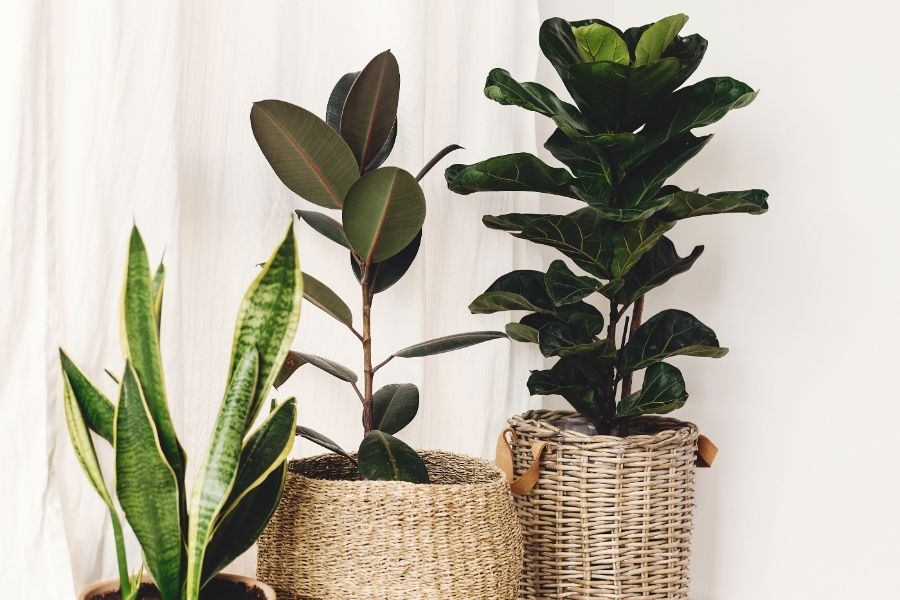
– Types of Faux Plants for Good Feng Shui
Using fake plants for good feng shui into your living or working spaces can be a practical way to enhance Feng Shui, especially when circumstances make it challenging to maintain real plants. According to Feng Shui principles, even artificial plants, if chosen and placed wisely, can positively influence the flow of energy or chi. Here’s a guide to selecting artificial plants that are most conducive to good Feng Shui.
1. Bamboo
In Feng Shui, bamboo is a symbol of resilience, luck, and prosperity. An artificial bamboo plant can be a perfect addition, especially in the wealth corner (southeast) of a room or space. Opt for a lifelike artificial bamboo with a natural green hue to enhance the positive energy.
2. Ficus
Ficus plants, known for their lush foliage, are associated with abundance, air purification, and positive energy. A high-quality artificial ficus can be placed in areas of your home where you wish to boost growth and vitality, such as the living room or family area.
3. Orchids
Orchids stand for love, beauty, and refinement in Feng Shui. Artificial orchids, especially in shades of pink or white, can be placed in the relationship area (southwest corner) or the bedroom to foster romance and harmony.

4. Peace Lily
Peace lilies are revered for bringing calm and peace. An artificial peace lily, with its broad, dark green leaves and white flowers, can be a great addition to spaces where you seek tranquility and relaxation, like bedrooms or meditation areas.
5. Money Plant
The money plant, or money tree, is a popular Feng Shui plant known for attracting wealth and prosperity. An artificial version placed in the wealth corner (southeast) of your home or office can symbolize financial stability and growth.
6. Ferns
Ferns, with their lush and intricate leaves, represent tranquility, new beginnings, and rejuvenation. Nearly real artificial ferns can be placed in living areas or near entrances to invite a soothing and welcoming energy.
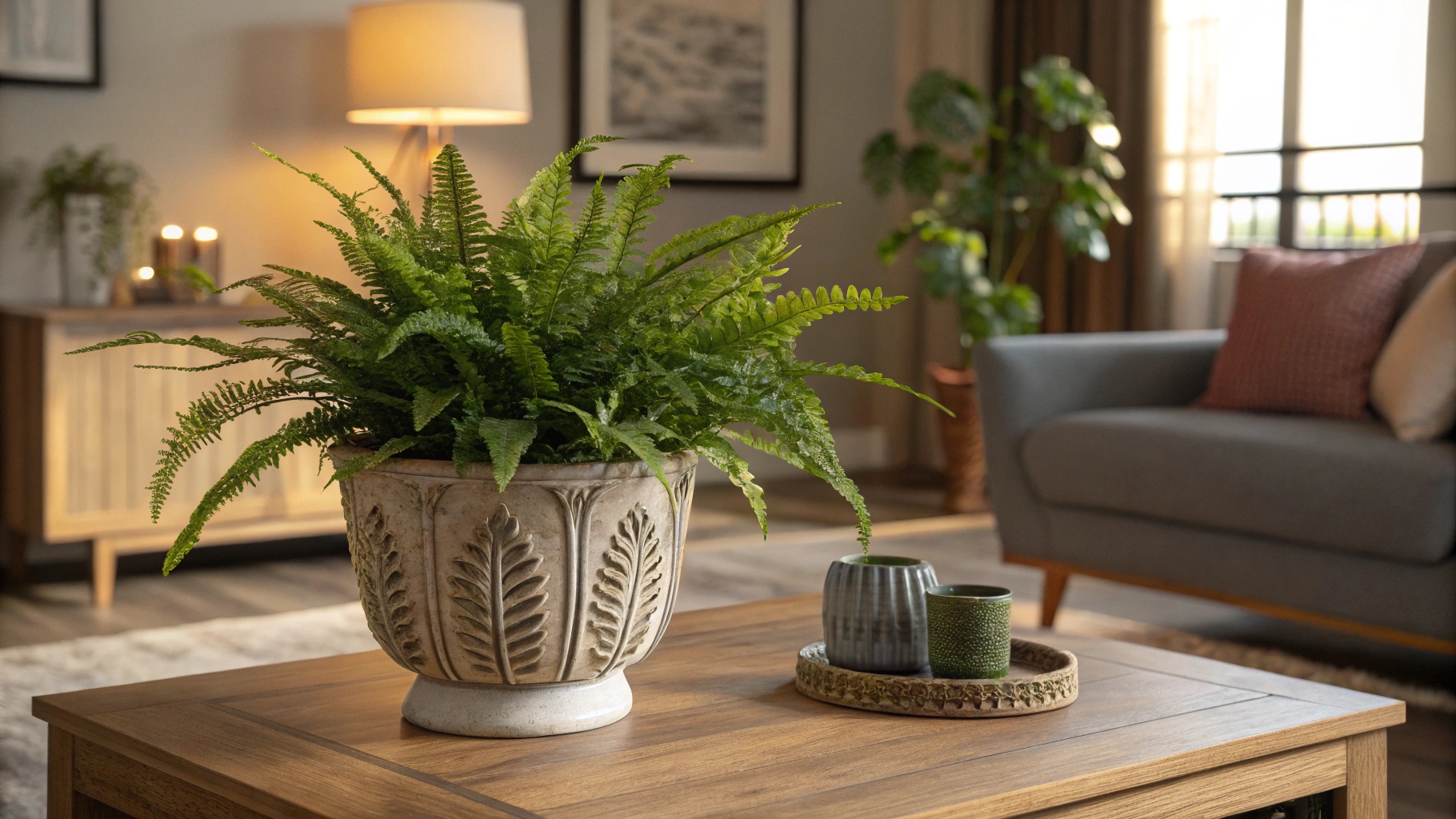
7. Bonsai
Bonsai trees in Feng Shui symbolize harmony, balance, and patience. Placing an artificial bonsai in areas of study or work can enhance focus and equilibrium, making them the best artificial plants for feng shui office.
8. Flowering Plants
Artificial flowering plants like chrysanthemums, lotuses, or peonies can bring color, nature and vitality. Depending on their color, they can be used to enhance different aspects of life, such as pink for love and relationships or yellow for health and well-being.
9. Citrus Trees
Citrus trees, such as lemon or orange, are symbols of abundance, happiness, and health. Artificial citrus trees in kitchens or dining areas can bring a sense of freshness and prosperity.
| Type of Plant | Ideal Placement | Significance |
| Bamboo | Wealth corner (Southeast) or East | Symbolizes resilience, luck, and prosperity. Encourages growth. |
| Ficus | Living room or Family area | Associated with abundance, vitality, and positive energy. |
| Orchids | Relationship area (Southwest) or Bedroom | Represents love, beauty, and refinement. Fosters romance and harmony. |
| Peace Lily | Bedrooms or Meditation areas | Brings calm and peace. Ideal for tranquility and relaxation. |
| Money Plant | Wealth corner (Southeast) | Attracts wealth and prosperity. Symbolizes financial stability. |
| Ferns | Living areas or near Entrances | Represents tranquility, new beginnings, and rejuvenation. |
| Bonsai | Areas of study or work (Offices, Libraries) | Symbolizes harmony, balance, and patience. Enhances focus. |
| Flowering Plants | Varies based on color; Pink for love (Southwest), Yellow for health (Center) | Adds color and vitality. Different colors enhance various life aspects. |
| Citrus Trees | Kitchen or Dining area | Symbolizes abundance, happiness, and health. Brings a sense of freshness. |
– Selecting the Right Artificial Plants for Feng Shui
When incorporating artificial plants into your space for Feng Shui purposes, it’s not just the type of plant that matters, but also their size, color, texture, and shape. Each of these aspects can significantly influence the flow of energy, or chi, in your environment. Here’s a guide to making the right choices in these areas.
1. Size and Scale Considerations
The size of the artificial plant should be in harmony with the space it occupies. Here are some tips:
Small Spaces: In compact areas, like apartments or small rooms, choose smaller plants. Oversized plants can overwhelm the space, leading to a feeling of clutter and stagnation in chi.
Large Spaces: Larger rooms can accommodate bigger or taller plants. These plants can become focal points and help the energy flow upward and around the room.

Proportions: The plant should be proportionate to the furniture and space around it. For example, a small plant on a large table can look lost, while a too-large plant can dominate a space.
2. Color Selection
Colors in Feng Shui are used to represent the five elements and can greatly impact the mood and energy of a space.
Green: The most common color for plants, it represents growth, health, and vibrancy. It’s suitable for almost any room and is especially good for spaces where you want to foster new beginnings or growth.
Red, Pink, and Purple: These colors are associated with the fire element. They can be used to add energy and passion to a space, particularly beneficial in living and dining areas.
Yellow and Orange: Symbolizing earth elements, these colors bring a sense of stability and nurturing. They are great for family spaces and kitchens.
White and Metallic: These colors relate to the metal element and are good for creating a clear, precise, and open vibe. Ideal for offices or areas where clarity and focus are needed.
3. Texture and Shape
The texture and shape of the plant leaves and overall form can influence the energy flow and balance in a space.
Round and Soft: Plants with round, soft leaves are believed to promote a gentle, nurturing energy. They are ideal for creating a calming and peaceful environment.
Sharp and Pointy: Plants with sharp leaves or pointy shapes can add a dynamic, vibrant energy. However, they should be used cautiously as they can introduce too much Yang energy, leading to imbalance.
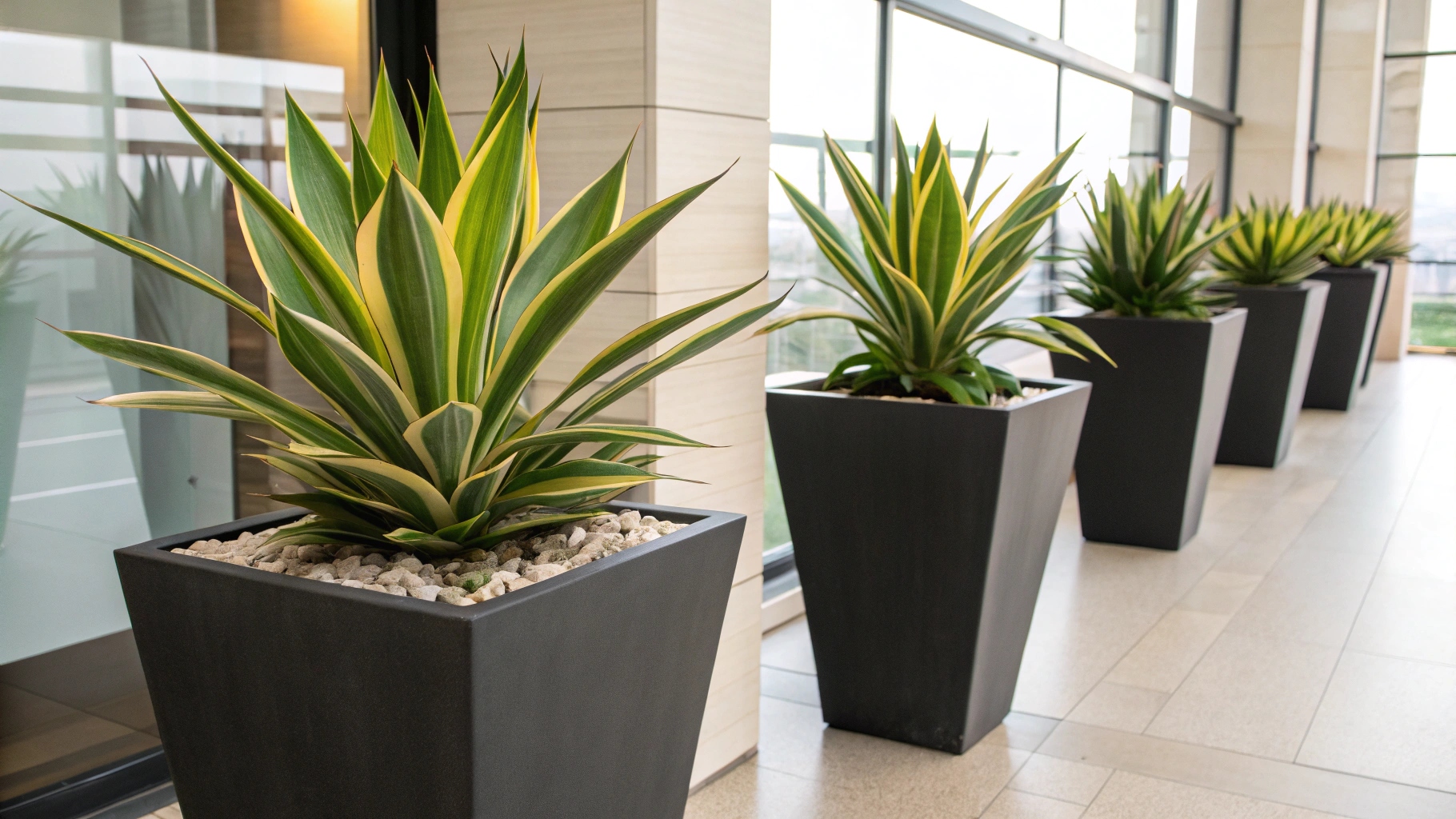
Flowing Shapes: Plants that have a flowing, upward shape can help direct energy in a space, guiding it upwards and promoting a sense of growth and expansion.
– Ideal Placement of Fake Plants for Positive Energy
Incorporating artificial plants into your home’s decor can be more than just an aesthetic choice. When placed according to Feng Shui principles, these plants can significantly enhance the positive energy in various areas of your home. Here’s a guide to the ideal placement of artificial plants for promoting wellbeing and harmony in key spaces:
1. Entrance and Living Room
The entrance is the first point of contact with your home and sets the tone for the energy entering your space. Place a vibrant and welcoming artificial plant here, such as a faux bamboo or a lush green fern, to attract positive energy and good fortune.
Living room is often a social hub, so focus on fostering social harmony and balance. Large, leafy plants like a faux ficus or monstera can bring a sense of growth and vitality. Ensure the plants are proportionate to the room size to keep the energy flowing smoothly.
Learn more about Best Artificial Trees for Living Room.

2. Kitchen and Dining Area
The kitchen is the heart of the home, associated with nourishment and family bonding. Small, cheerful plants like artificial herbs or a small citrus tree can promote a sense of health and wellbeing.
Dining area benefits from plants that symbolize abundance and prosperity. Consider placing a faux money plant or lush greenery to encourage a sense of fullness and satisfaction.
3. Bedroom
The bedroom should be a sanctuary for rest and relaxation. Opt for soothing, soft-leafed plants like artificial peace lilies or small, gentle ferns. Place them in a way that doesn’t overwhelm the space, ensuring a peaceful and restful environment.
4. Home Office or Study
In areas dedicated to work or study, the goal is to boost creativity and productivity. Plants with upward growth like artificial bamboos can symbolize upward movement and progress. Alternatively, a small faux bonsai can promote mental balance and focus. The placement should be in a spot where the plant can energize the space without being a distraction.

– Feng Shui Tips for Artificial Plant Arrangements
Artificial plant arrangements, when done correctly, can enhance the Feng Shui of a space, promoting a balanced and harmonious energy flow. Here are some tips on creating effective arrangements, avoiding common pitfalls, and incorporating other Feng Shui elements for an optimized environment.
1. Creating Balance with Arrangements
Grouping for Harmony: Group plants in odd numbers (like 3 or 5) as this is considered more harmonious in Feng Shui. Arrange them at different heights to create a natural, dynamic look.
Variety and Proportion: Mix different types of plants to add variety but ensure they are proportionate to each other and the space. Avoid overcrowding, as too many plants can clutter the energy flow.
Symmetry vs. Asymmetry: While symmetry is often seen as aesthetically pleasing, asymmetrical arrangements can create a more relaxed and natural energy flow. Consider the overall feel of the room when deciding on your arrangement.

2. Avoiding Negative Energy
Location Matters: Avoid placing artificial plants in areas where they can block natural pathways or light. This can create stagnant chi.
Bedroom Caution: Be cautious about adding plants to the bedroom. If you do, choose smaller, less vibrant ones to maintain a restful energy.
Quality and Condition: Ensure the artificial plants are of high quality and well-maintained. Dusty, faded, or tattered plants can attract negative energy.
– Maintenance and Upkeep of Artificial Plants for Optimal Feng Shui
Proper maintenance and periodic updates of artificial plants are essential in Feng Shui, as it ensures the continued flow of positive energy and keeps the space looking fresh and vibrant. Here’s a guide to the care, rearrangement, and replacement of artificial plants for optimal Feng Shui.
1. Regular Cleaning
Dust-Free Plants: Regularly dust your artificial plants to keep them looking vibrant and fresh. Accumulated dust can create a sense of neglect, impacting the energy of the space.
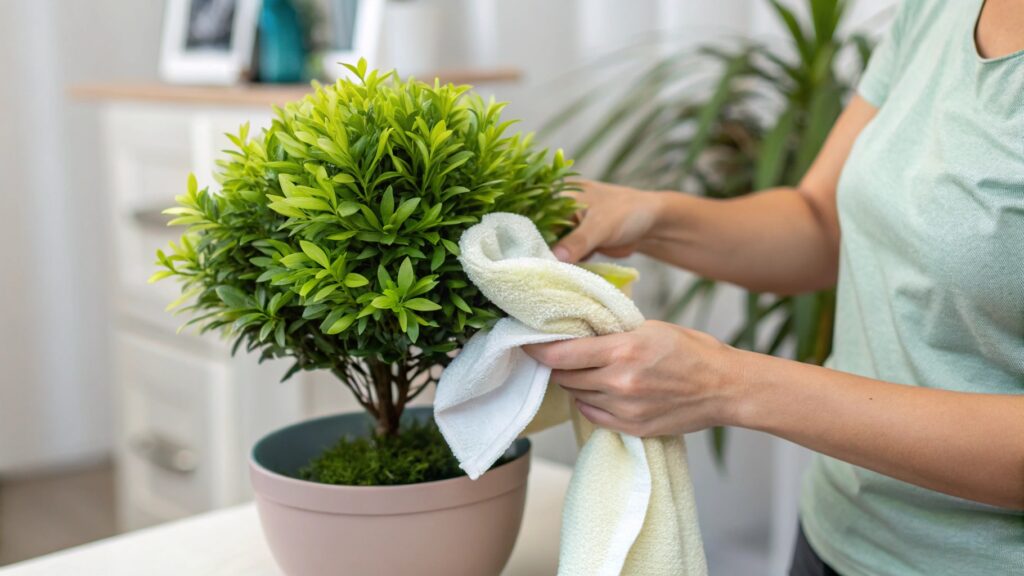
Deep Cleaning: Occasionally, give your plants a more thorough cleaning. Use a damp cloth or a mild soap solution to gently clean the leaves and stems. This is especially important in high-traffic areas where plants may accumulate more dirt.
Mind the Details: Pay attention to small nooks and crannies where dust can accumulate. A clean, well-maintained plant promotes a healthier and more positive chi.
2. Periodic Rearrangement
Refreshing the Space: Every now and then, rearrange your artificial plants. This helps to rejuvenate the energy in the room and prevent stagnation. It’s also an opportunity to reassess the Feng Shui of the space and make adjustments as needed.
Seasonal Adjustments: Consider making changes with the seasons. For example, brighter, more vibrant plants can be featured in the spring and summer, while more subdued, calming plants may be appropriate for fall and winter.
Experiment with Locations: Don’t hesitate to try new locations for your plants. Sometimes a new position can bring a surprising shift in the room’s energy.
3. When to Replace
Signs of Wear and Tear: If an artificial plant starts to look faded, frayed, or otherwise worn, it’s time to replace it. Worn plants can bring down the energy of a space.
Outdated Styles: Styles change, and what was once a trendy plant may now look dated. Keeping your decor contemporary can positively influence the chi of your home.
Shifts in Personal Taste or Decor: As your taste or the overall decor of your home evolves, your artificial plants should evolve too. This alignment ensures that your space remains harmonious and energetically aligned with your current state of living.
4. Additional Tips
Avoid Overcrowding: Regularly assess your space to ensure it’s not becoming cluttered with too many plants, as this can impede the flow of chi.
Mind the Quality: When replacing plants, choose high-quality, realistic-looking ones. This maintains the aesthetic and energetic integrity of your space.

Artificial plants offer a practical and aesthetically pleasing way to enhance the Feng Shui of any environment. They bring the vitality and growth symbolism of the Wood element without the maintenance demands of real plants. Experimenting with different arrangements and placements, and observing the changes in energy and ambiance, can be both rewarding and enlightening.
As a leading manufacturer in Artificial Plants industry, we believe that good energy and beautiful design should be effortless. That’s why FeelReal is dedicated to crafting premium artificial plants that look and feel realistic, perfectly embodying the positive energy needed for Feng Shui. With our decorative Plants, you can create a harmonious, maintenance-free space and enjoy the benefits of balanced “chi.”
